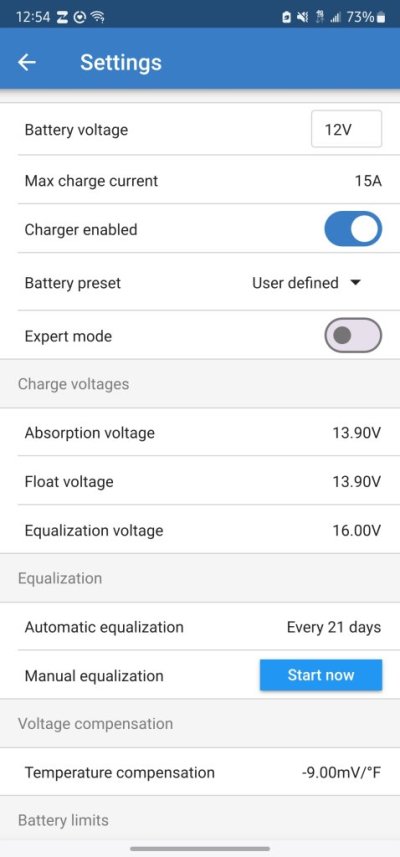mvweebles
Guru
- Joined
- Mar 21, 2019
- Messages
- 7,796
- Location
- United States
- Vessel Name
- Weebles
- Vessel Make
- 1970 Willard 36 Trawler
Right now, I'm pulling drywall at our house and the only power we have is a simple 100w panel driving a 100ah LFP battery via a Victron 75/15 MPPT. I also installed a Victron Smartshunt. All this to run a small fridge and recharge my cordless tools which has been invaluable.
I cannot get the monitor to read properly.
First. It's bright sun here today. Gorgeous day to pull Sheetrock
#1. At 11:30 this morning, shunt showed showed system voltage of 12.83v and consumed AH of 60.6ah.

#2. One hour later (12:41) voltage has increased to 12.97v so clearly it's receiving a charge from the MPPT, but the AH consumed continues to increase negative (as does the SoC).

#3 for reference, here are my battery settings on the shunt.

#4. And the settings on the MPPT


So the system is charging fine but the readings are not correct - AH consumed are not adjusted for solar charge from MPPT. What am I doing wrong?
Thanks in advance
Peter
I cannot get the monitor to read properly.
First. It's bright sun here today. Gorgeous day to pull Sheetrock
#1. At 11:30 this morning, shunt showed showed system voltage of 12.83v and consumed AH of 60.6ah.
#2. One hour later (12:41) voltage has increased to 12.97v so clearly it's receiving a charge from the MPPT, but the AH consumed continues to increase negative (as does the SoC).
#3 for reference, here are my battery settings on the shunt.
#4. And the settings on the MPPT
So the system is charging fine but the readings are not correct - AH consumed are not adjusted for solar charge from MPPT. What am I doing wrong?
Thanks in advance
Peter

